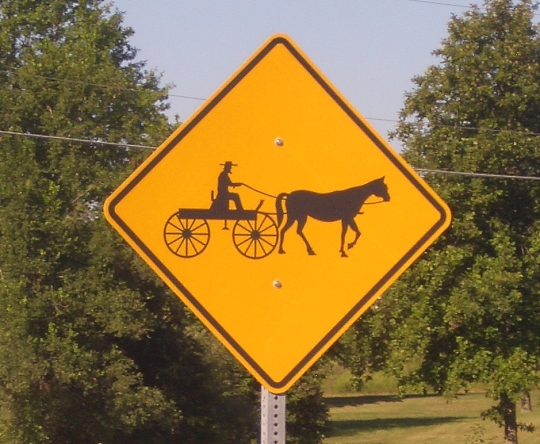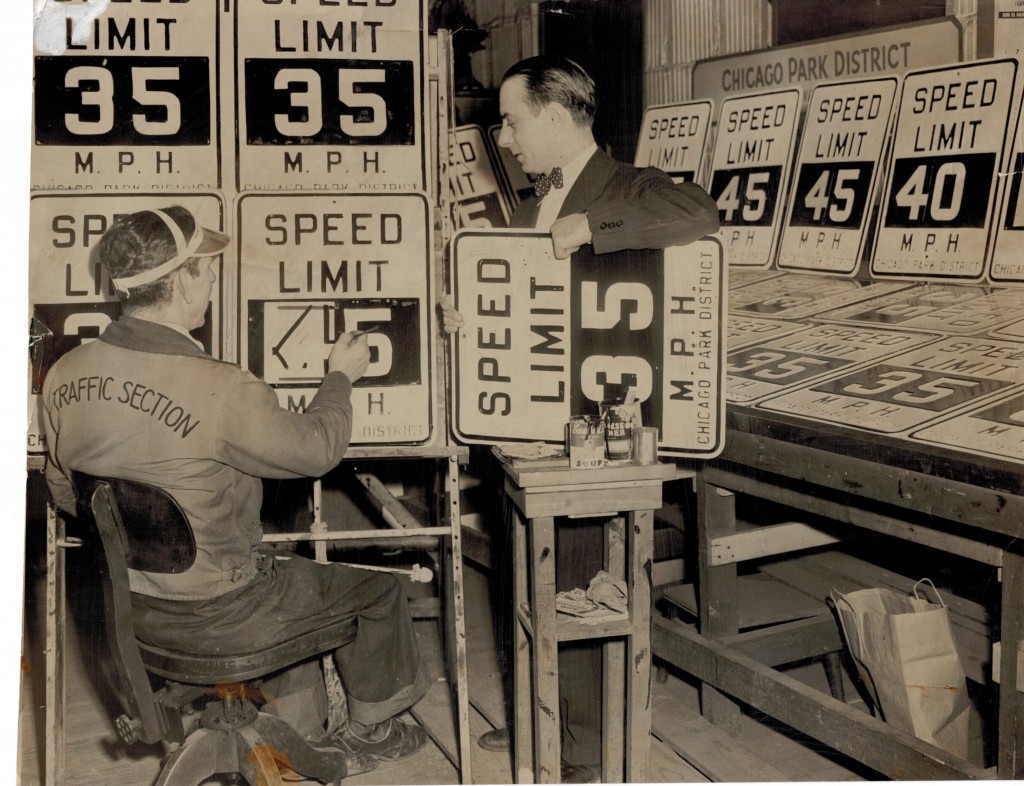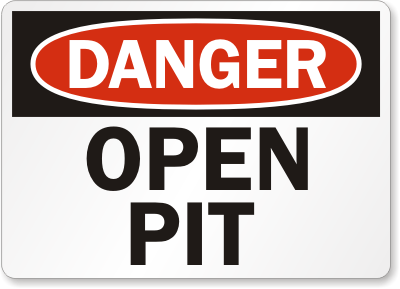Antique Technique: Properly Dating Your Signs

Lest you venture into Amish country, signs like this probably carry more historical than practical value.
May 8, 2012 — Humans are a perceptive species, with the ability to process data at an incredible speed. Each day, we are bombarded with information, the majority of which comes from various types of signage. Advertisements, street signs, and business signs are just a few of the different inputs that people absorb each day. Hence, the ability to evaluate and discern the validity and era of the signs we are confronted with is a valuable skill. For example, a sign that reads “Carriage Parking Here” is probably a bit dated and can be disregarded. But what if you’re confronted with content that’s a bit more vague? A sign that says “Warning: Carriages Cannot See Pedestrians” is harder to place along a timeline, especially when posted near a store that rents carriages.
Beyond being a practical skill, the ability to identify the age of a bit of signage can be a thrilling endeavor. Of course, some truly old signs are still relevant, but others simply function as artifacts of a time gone by. Here at SmartSign, we’ve accrued some knowledge in sign history – and we’re ready to share it with you! So read on. Maybe the next time you see an awkwardly painted Ford Motors sign lying in a bin at the Goodwill, you’ll do a double take. That bit of scrap metal just might be the key to unlocking a rich and fascinating antiquity.
In the world of antique signage, there are several indicators that can help to date a true vintage piece. Prior to the Industrial Revolution, the majority of signs were hand-painted. Whether individual signs forbade parking or vended Coca Cola, the craftsmanship behind them was the focal point for observers. The craftsmen that created these signs artfully designed each piece, hoping to mimic an industrial uniformity, but there are certain cues that can assist historical detectives in identifying the authenticity of truly old signs.

Sign painters, circa 1947, still hand-painted many street signs. This image is an exclusive from the SmartSign archives.
First, a good sign painter was complimented for an ability to “swing” letters. A particularly talented artist would receive praise for being able to “swing an exquisite O.” Since each letter had to be drawn by hand with precision, some of the most difficult letters in the alphabet were S, C, and O. A venerable hand-painted sign would have subtle differentiation between even the most well-swung letters. Identifying variations in thickness or curve is one way to deduce that a sign is not machine-made.
Brush strokes are another key indicator of a vintage, hand-painted sign. As always, a good craftsman would apply paint evenly, but even the most skilled hand cannot perfect the precision of a factory machine. Bumps in paint, slight variance in thickness, and minimal streaking are all ways to decipher the true historical clout of a sign.
Sign materials should also make sense for the era in which they were created. For instance, during the second World War, US citizens were encouraged to donate scrap metal. Thus, the production of porcelain signs increased, since metal production factories were being utilized to produce weapons for soldiers. Modern-day metal signs now feature a baked-on enamel finished aluminum, while period signs were pure steel and more prone to rust. Rust and other imperfections can date a sign due to such material discrepancies. Additionally, a porcelain sign from the World War II era will have indented letters, since the porcelain was not cast, but molded for quicker, cheaper production and a lighter final product.
If you see this Danger sign up ahead, you could venture to say that waiting to uncover its historical relevance might not be in your favor.
Beyond materials, standardized sizes are another crucial clue in determining the age of a sign. During periods when the popular metals or plastics used for sign production were in demand for other products or services, sign-makers adhered to even cuts when choosing the sizes of their pieces, so as not to waste any of their material. Metal and plywood sheets are often produced in 4 ft. x 8 ft. sections. These would then be cut into even rectangular dimensions, i.e. 4’x4’, 2’x4’, 18”x24”, and 12”x9”. It is also crucial to note that what we think of today as standard paper sizes (8.5”x11”) were irrelevant to the sign industry.
This list might not be comprehensive, but these criterion will make you a bit savvier the next time you dive into the bushes in anticipation of a horse-drawn carriage that might never trot Main Street again.
– R. Sapon-White











